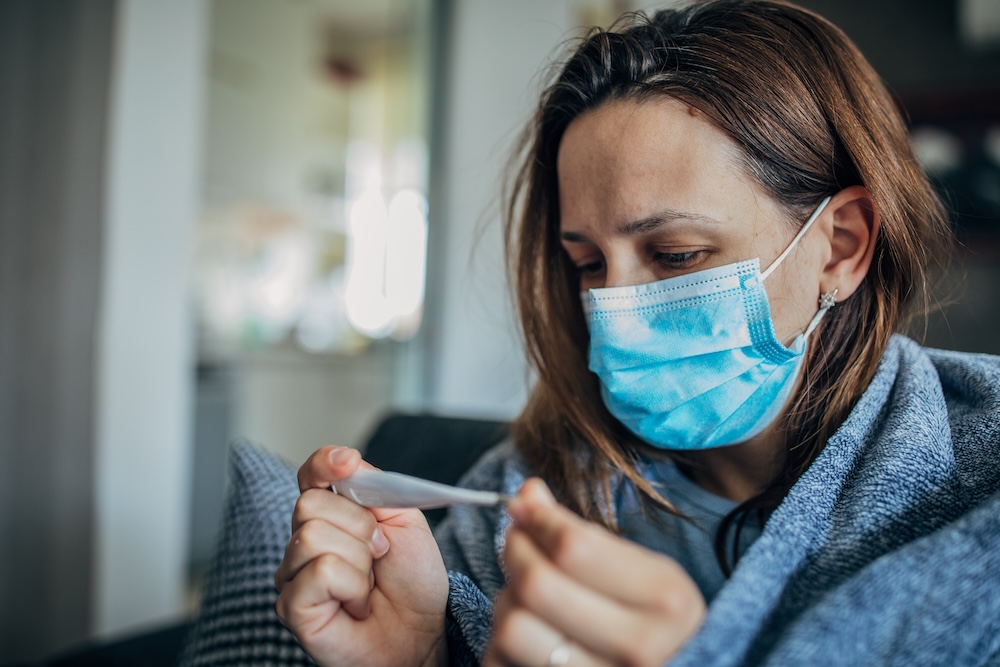Someone In Your Household Has COVID-19 Here's What You Can Do

Since early 2020, COVID-19 has changed the way we live. While it has become less of a threat than in previous years, with immunity built through vaccines, boosters and prior infection preventing serious disease and death, many families still find themselves asking: What do I do if COVID enters my home?
As soon as someone you are living with begins to experience symptoms of COVID-19, it’s important that they get tested and start isolating.
Don’t wait until after the results come back to isolate. Growing evidence suggests that those who have the virus are most contagious one to two days before and two to three days after starting to experience symptoms.
If their test is positive, the person with COVID should continue to isolate for at least five days after the onset of their symptoms. Individuals who are asymptomatic and test positive should isolate for at least five days from the date of the positive test.
Because coronavirus is transmitted through close contact with someone who is infected, it’s common for the virus to spread within homes. But a positive diagnosis for one person doesn’t always mean others will be infected.
What Does Isolation Look Like?
It’s best for the person who has COVID-19 symptoms or who has tested positive to remain isolated from everyone else in the household. But we know for many people, that’s easier said than done.
If possible, do everything you can to avoid using the same rooms and restrooms as the person who has tested positive. That may mean isolating them to a single room or section of your home, leaving their meals at their door and communicating over the phone.
If you live in close quarters and can’t do this, create as much air circulation as possible in your home by opening the windows.
If the person with COVID must leave their room, they should always wear a face mask and avoid contact with others. If you must share the same restroom, make sure to separate things like toothbrushes, use different toothpastes and shower products, and sanitize everything they touch. As always, make sure you’re washing your hands frequently.
If you absolutely cannot avoid close contact – for instance, if you’re caring for a sick child or elderly relative – the Centers for Disease Control & Prevention (CDC) recommends that you also stay home while they isolate. This will ensure you don’t risk spreading COVID-19 to others outside of your home.
As always, stay in tune with your own health and get tested if you’re exposed to the individual without a mask or start experiencing symptoms.
“How Long Do We Have To Do This?”
According to the CDC, if you have COVID-19 you should isolate for at least five days. Day 0 is your first day of symptoms or, if asymptomatic, the day you test positive. Day 1 is the first full day after your symptoms developed and so on.
You can end isolation after five full days if you’re fever-free for 24 hours without the use of fever-reducing medication and your other symptoms have improved. Keep in mind, loss of taste and smell may last for weeks or months and do not need to delay the end of isolation.
Even after your isolation window, you should continue to wear a well-fitting mask around others at home and in public for five additional days (Day 6 through Day 10). If you are unable to wear a mask, you should continue to isolate for a full 10 days.
It is also important to stay away from people who are immunocompromised, high risk and those in nursing homes until after at least 10 days. Contact your healthcare provider if you have questions.
Caring For Someone With COVID-19
Many times, people who are sick with COVID-19 can recover safely at home. This seems to be especially true of the Omicron variant, and its sub variants. While indications have shown it’s more contagious than previous variants, its symptoms seem to be less severe.
People who have been vaccinated will likely have a much easier time recovering, as their bodies already have the antibodies needed to fight off the illness.
Someone who has COVID will need plenty of rest and likely some support from others so they can stay isolated. If you’re considered high risk for getting very sick with COVID-19, you should avoid being the infected person’s caregiver.
We’ve created a helpful guide with tips for caring for COVID at home, including recommended supplements, approved pain medications and tips for managing stress.
Make sure to stay alert to any worsening of symptoms. If someone begins showing signs of trouble breathing, persistent chest pain, new confusion, trouble waking or staying awake, or bluish lips or face, help them get emergency medical care immediately.
Still Have Questions?
The CDC’s website has a wealth of information about COVID testing, isolation and best practices. Don’t hesitate to reach out to your primary care doctor too. They can help advise you on the most appropriate course of action based on your personal health needs. Don’t have one? Connect with one of our TMH Physician Partners primary care offices by visiting TMH.ORG/PrimaryCare.
